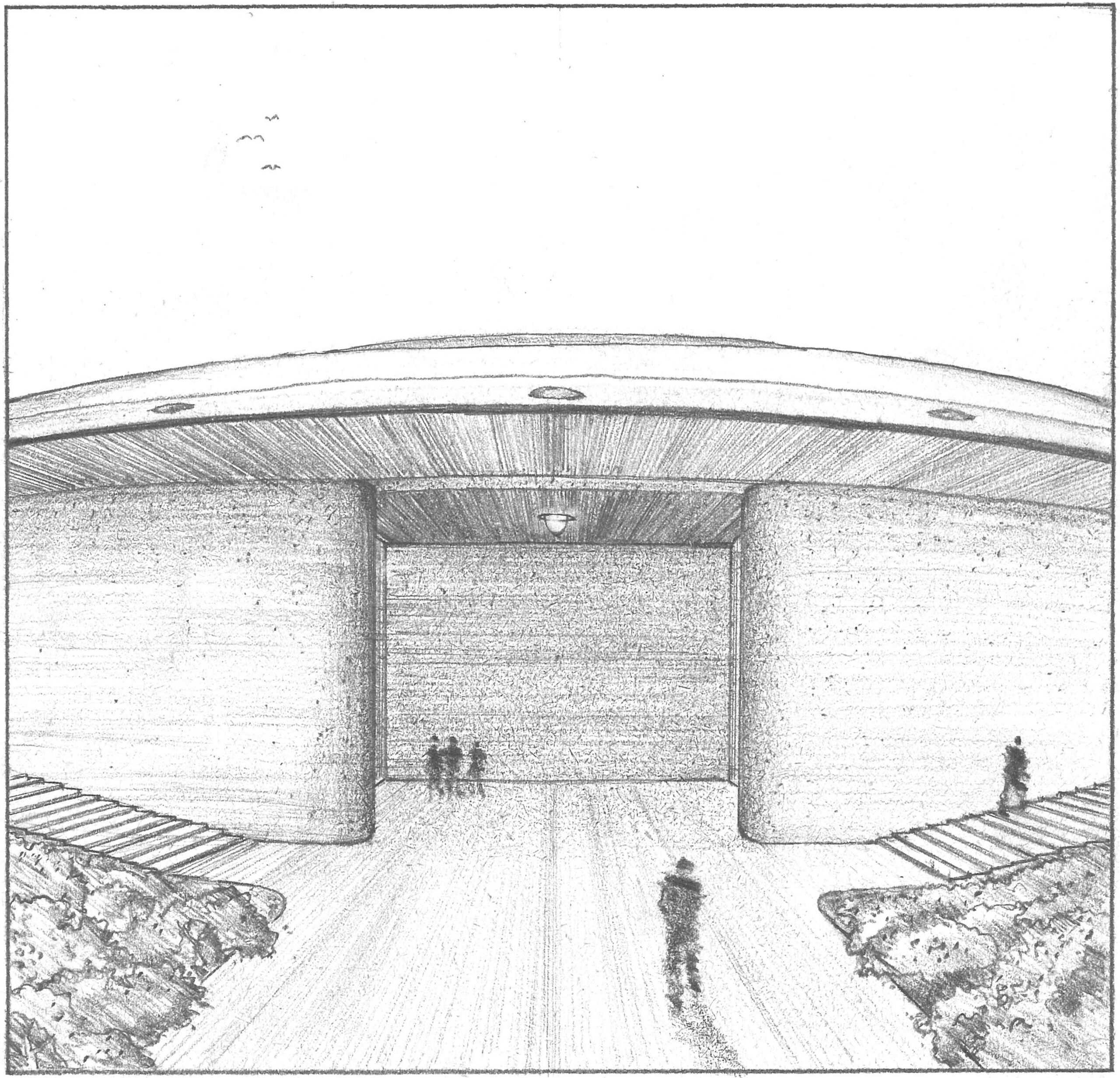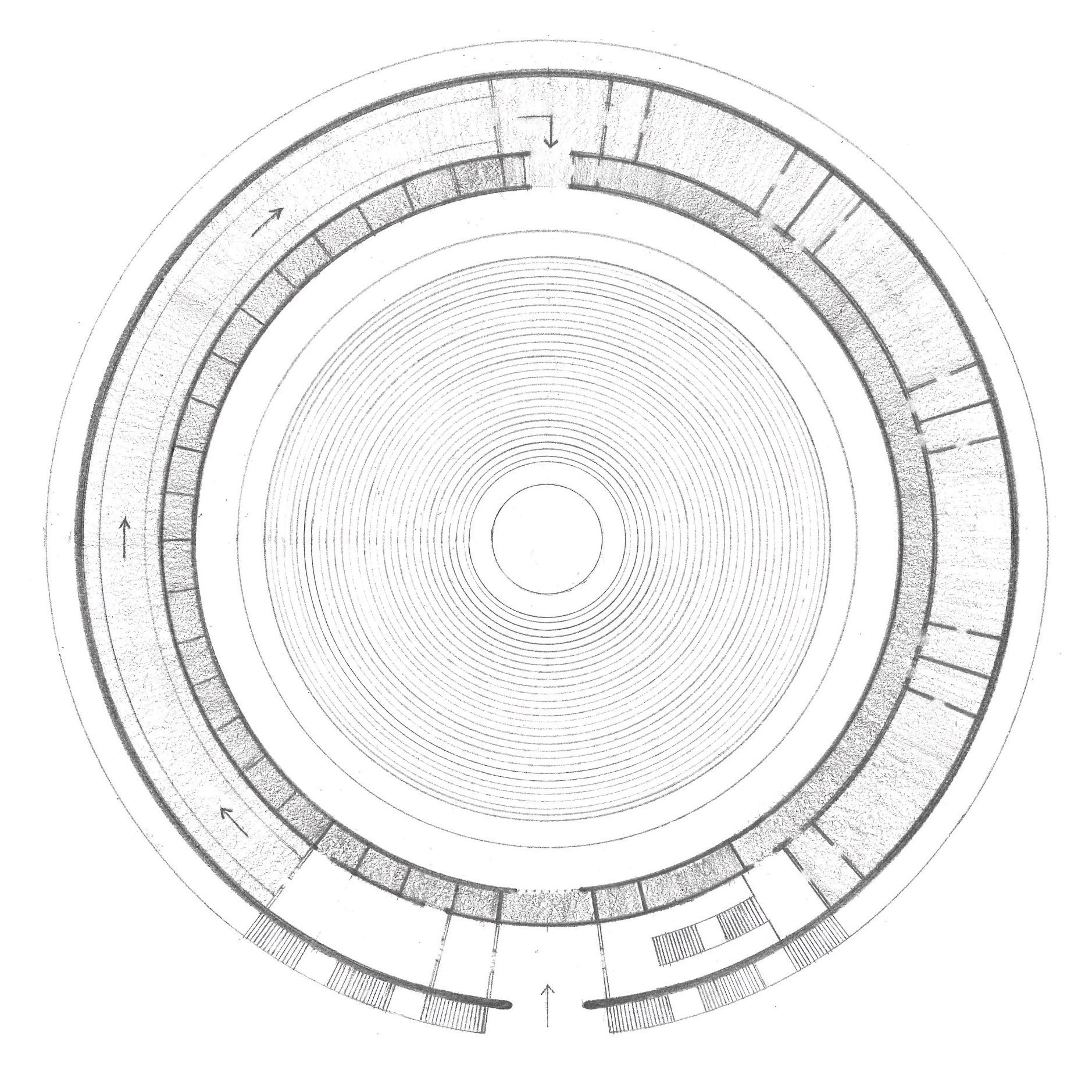I had a dream.
Passing through a dark corridor, I stepped onto a glass bridge enclosed by tall white walls. It felt like one of those familiar, estranged modern spaces. At the end, I walked through a door and into a green meadow. Along the path, I saw a long, low house woven with greenery, a dwelling that belonged to the earth. In the distance, I sensed the presence of something even greater. Then I woke up. I understood that the vision in my dream was the building I had been developing for years and that the path winding around the hill was leading me toward a new architecture — the Humanity Center.
The architecture consists of three concentric circles: the Contemplation Ring facing nature, the Ascension Hall rising gently upward, and the Ring of Light, illuminated by a narrow roof opening. From there, one enters the central platform within the open space of the floating dome. The central platform is conceived as an open foundation rather than a stage — a neutral point of gathering. Much like in a church, it holds space for both silence and community. Through the repositioning of movable elements, the interior can shift seamlessly from a place of contemplation into a venue for cultural events such as concerts, performances, lectures, or collective gatherings.











